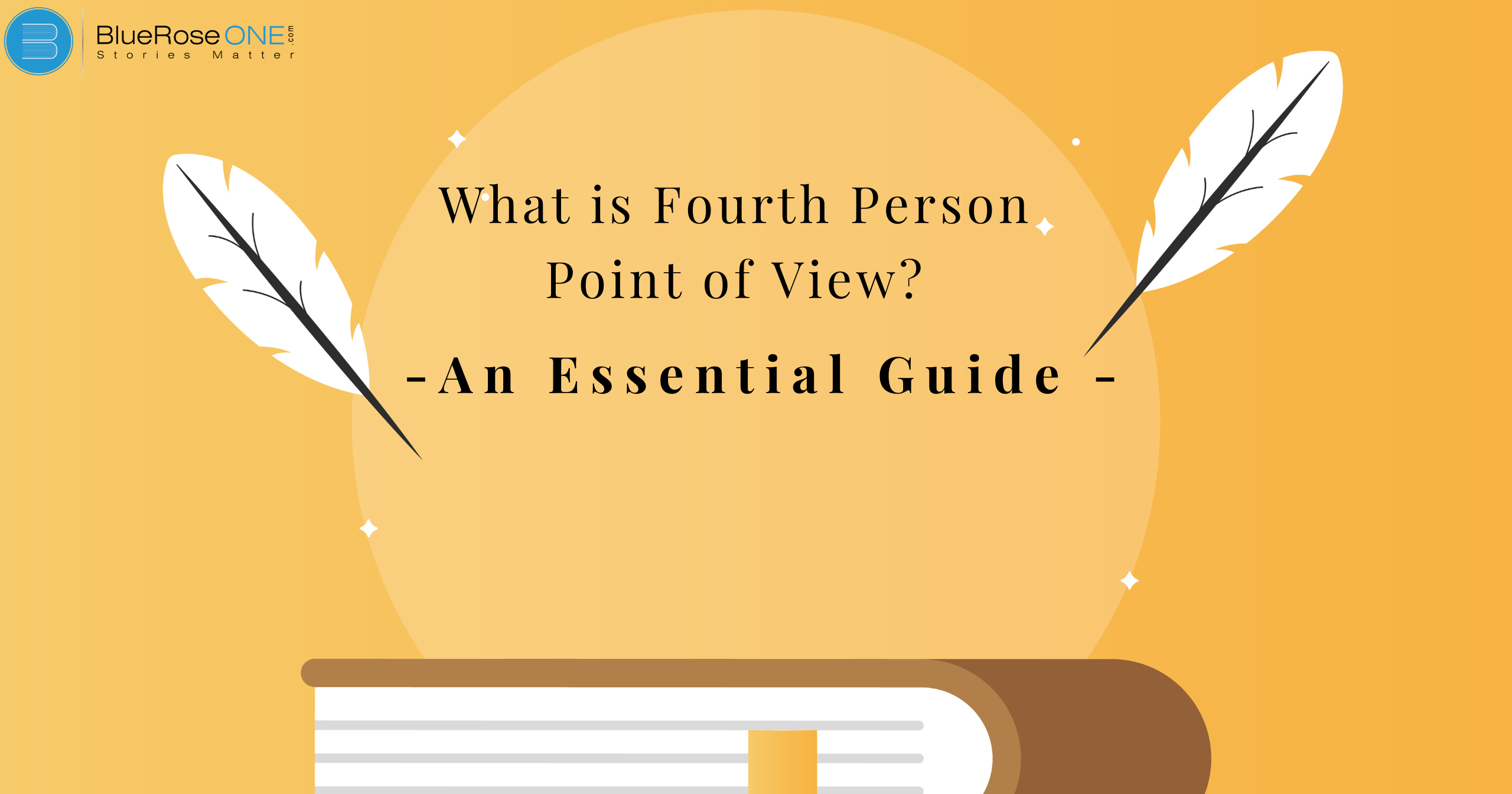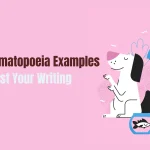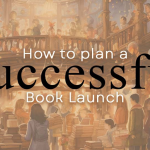Have you ever wondered how the perspective in a story shapes its impact? Point of view (POV) is like the lens through which readers experience a narrative. Most of us are familiar with the first, second, and third person perspectives. But what about the mysterious fourth person point of view? Let’s dive into this intriguing concept and see what it offers.
What is the Fourth Person Point of View?
The fourth person point of view is an uncommon collective viewpoint that emphasizes a shared or universal experience. Unlike the personal “I” or the directed “you,” it addresses a group of people, generally with the goal of encouraging inclusivity and a sense of belonging.
You may also read: Third Person point of view vs. First Person: Which is Right For Your Story?
Key Characteristics of Fourth Person Point of View
Collective Pronouns: The use of collective pronouns such as “we,” “us,” and “our” is a distinguishing trait of the fourth person perspective. These pronouns express a collective worldview, emphasizing common experiences or acts over individual perspectives. This strategy fosters a sense of unity by frequently blurring the lines between the narrator and the audience. It is ideal for storytelling that focuses on communal ideals, societal insights, or collective acts, letting readers feel a part of the story.
Inclusive Tone: One distinguishing feature of the fourth person point of view is its inclusive tone. This viewpoint frequently appeals to a larger audience, promoting collective understanding and shared experiences. By focussing on generic observations or community behaviors, it avoids singling out individuals and instead makes readers feel like they are part of a bigger group. This inclusive tone is especially beneficial in narrating universal themes, cultural tales, or societal conventions, as it fosters a sense of connection and belonging in readers.
Universal Appeal: One distinguishing feature of the fourth-person point of view is its global appeal. This viewpoint emphasizes collective experiences or common truths that transcend individual perspectives, making it more accessible to a larger audience. It frequently employs terminology such as “we,” “they,” and even broad notions to connect readers to a feeling of community or collective identity. This technique can be deeply meaningful since it enables readers to think on common human experiences, promoting empathy and understanding on a global scale.
Comparison with Other Points of View
The first-person point of view provides a personal and intimate perspective because the narrator communicates directly with “I” or “we.” This style lets readers engage with the story by immersing themselves in the narrator’s thoughts, emotions, and experiences. However, unlike the fourth-person point of view, which is more abstract and focuses on collective experiences or generalized viewpoints, the first-person viewpoint is confined to the narrator’s knowledge and cannot provide insight into the inner lives of other characters.
Second Person Point of View
The second person point of view addresses the reader directly with “you,” letting them feel a part of the story. Unlike the immersive and personal quality of first person (“I”) or the observational distance of third person (“he,” “she,” or “they”), second person immerses the reader in the protagonist‘s shoes. This technique is frequently employed in interactive writing, such as choose-your-own adventure books. It contrasts with the fourth person point of view, which emphasizes broader, collaborative perspectives.
The third person point of view uses an external narrator to narrate one or more characters’ actions, ideas, and feelings. Unlike the fourth person, which takes a broader, collective view, the third person offers a more intimate and comprehensive look at individual events. It is often employed in storytelling because of its versatility, allowing authors to explore events and emotions from multiple perspectives without confining the narrative to a single character’s point of view.
You may also read: The power of Third-Person Omniscient in Storytelling
Deep Dive into the Fourth Person POV
Collective Perspective
The fourth person point of view provides a distinct narrative style by emphasizing a group perspective rather than an individual. This viewpoint frequently reflects groups, communities, or mankind as a whole, emphasizing common experiences and universal truths. Instead of “I” or “they,” the story could emphasize interconnection by using broad pronouns like “we” or abstract phrases like “one.” This viewpoint is especially successful in stories about society standards, cultural identities, or communal conflicts, as it creates a unifying tone.
Pronouns Used in Fourth Person
Pronouns are less clearly defined in the fourth person (POV) than in other perspectives. It’s frequently a larger, communal, or indeterminate voice that refers to persons or entities without naming them explicitly. Words like “one,” “people,” and even passive constructs like “it is said” can be used. This point of view is uncommon and can convey a sense of distance or universality, making it perfect for investigating broad, communal ideas rather than focussing on individual experiences.
How It Creates a Universal Voice
Pronouns are less clearly defined in the fourth person (POV) than in other perspectives. It’s frequently a larger, communal, or indeterminate voice that refers to persons or entities without naming them explicitly. Words like “one,” “people,” and even passive constructs like “it is said” can be used. This point of view is uncommon and can convey a sense of distance or universality, making it perfect for investigating broad, communal ideas rather than focussing on individual experiences.
Applications of Fourth Person POV in Writing
The fourth person point of view (POV) is rarely utilized in traditional narrative, but it can provide an interesting perspective in certain situations. In writing, the narrator frequently describes events from a detached or collective perspective, sometimes emphasizing the “group” or “universal” experience more than individual people. This point of view could be used in stories that try to examine wider social, cultural, or philosophical issues, where the actions of a group are more important than those of a single individual.
It can also be employed in experimental or avant-garde fiction to question established narrative structures and convey a feeling of detachment or objectivity. Writers can use the fourth person to highlight the broader repercussions of events, making it a helpful tool for exploring themes of community, conformity, or universal feelings, particularly in works that focus on societal issues rather than personal character development.
You may also like: Blog Review – The Head and the heart a Book by Aishwarya Iyer
Advantages of Using Fourth Person POV
Fosters Inclusivity:One of the benefits of employing the fourth person POV is that it promotes inclusion in storytelling. By allowing the narrator to move beyond the customary bounds of individual perspectives, it can reflect a collective voice or a bigger, more universal experience. This makes it simpler for readers from diverse backgrounds or situations to connect with the story, fostering a sense of shared identity and understanding. It has the potential to reduce boundaries and provide a more inclusive perspective on the world.
Promotes Shared Experience: One advantage of employing the fourth person point of view is that it encourages shared experiences. Rather than focussing on one individual’s point of view, this perspective permits the narrator to portray group-wide opinions or experiences. It contributes to a shared sense of involvement, allowing readers to feel connected to the greater community or group dynamic. By emphasizing shared experiences, it develops a sense of community and empathy among readers.
Challenges of Writing in Fourth Person POV
Risk of Vagueness: One disadvantage of writing in the fourth person point of view is the danger of ambiguity. Because the fourth person is a less common perspective, readers may struggle to understand who the narrator is speaking to or how they relate to the events. This ambiguity can cause confusion, making it difficult for readers to engage with the story. To ensure that the audience understands the story, writers must be clear and exact in their descriptions.
Difficulty in Establishing Connection: One of the most difficult aspects of writing in the fourth person point of view (POV) is connecting the reader with the characters. Because the fourth person sometimes takes an abstract or collective perspective, readers may struggle to empathize with specific people or comprehend their motivations. Because the point of view is less focused on individual experiences, creating emotional involvement or a strong sense of closeness may be more difficult.
You may also read: What is a Round Character? Definition and Key Traits
Tips for Writing in Fourth Person Point of View
Understand Your Audience: When writing in the fourth person, it’s critical to understand your audience’s expectations and familiarity with this distinct viewpoint. Because fourth person is not usually used, readers may find it perplexing if not handled properly. Make sure your audience is ready for this storytelling approach by providing adequate context. Tailor your writing to provide clear insights into how the characters are perceived from an external lens, allowing readers to remain involved without feeling lost.
Blend Fourth Person with Other POVs: When writing in the fourth person POV, it can be beneficial to combine it with other views, such as first or third person. This provides for a more complete narrative, offering the reader insights into the group experience while keeping individual perspectives. Mixing viewpoints can make the story more dynamic and layered, establishing a stronger link between the narrator’s internal thoughts and the outside world. Just make sure the transitions between POVs are clean to prevent confusing the reader.
Fourth Person in Other Fields
Marketing and Advertising
The concept of the fourth person is rarely employed in marketing and advertising, although it can be used to speak on behalf of a group or audience. It may relate to the collective voice of potential customers or a larger demographic, with an emphasis on how a product or service affects them. Using this perspective can assist businesses in developing messages that resonate with their target audience, increasing participation and instilling a sense of inclusivity or community in the brand’s communications.
Business and Training
Conclusion
The fourth person point of view provides a new way to express stories by combining inclusivity and universality. While it is less prevalent than other points of view, it has enormous possibilities for writers who want to explore. Why not try it?
Frequently Asked Questions
Its abstract nature makes it challenging for many writers to execute effectively.















